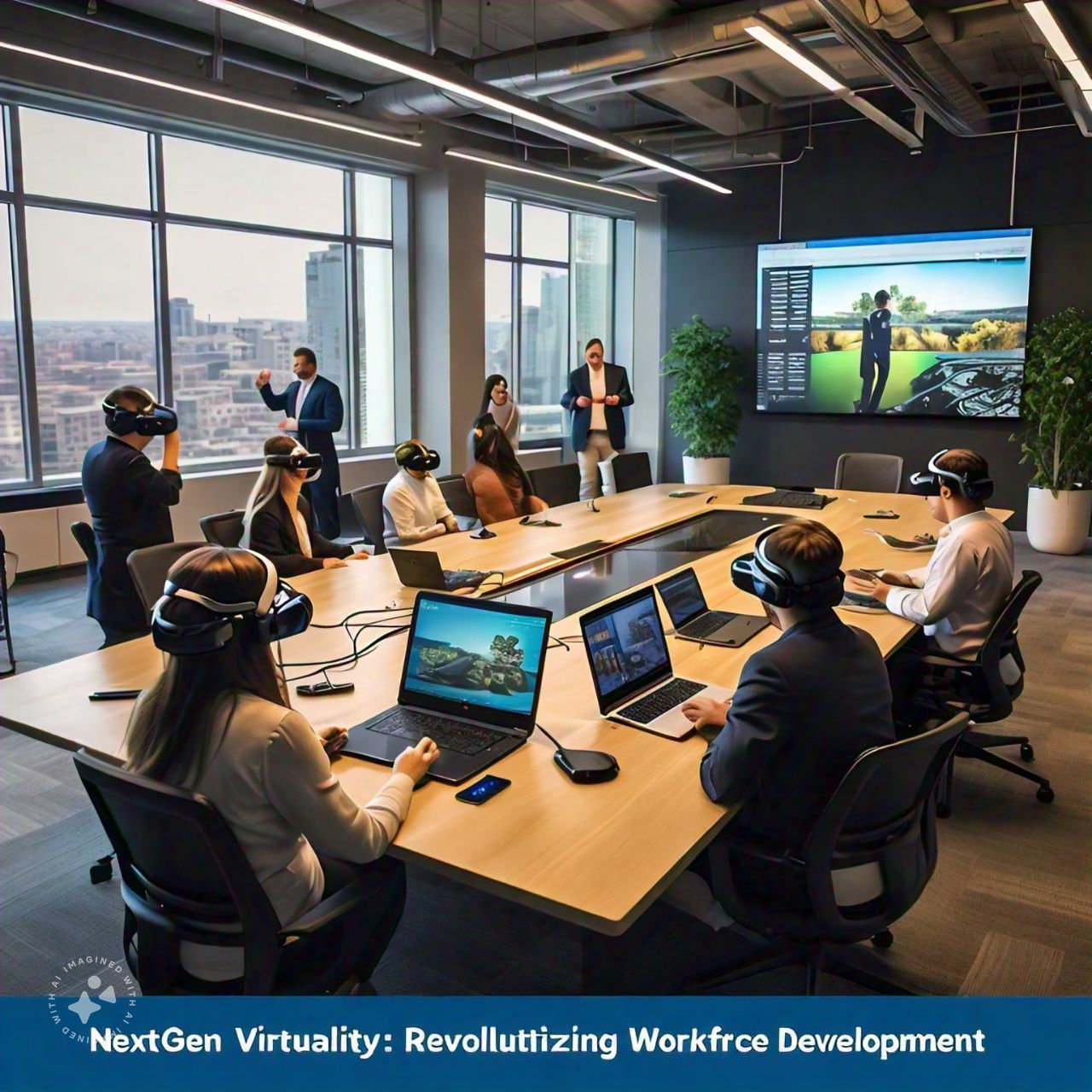
NextGen Virtuality for Workforce Development
NextGen Virtuality is changing the game when it comes to workforce development, offering organizations a unique, immersive way to train and onboard new employees. In today’s rapidly evolving corporate landscape, companies need innovative strategies to streamline employee learning and ensure a smooth transition into their roles. NextGen Virtuality stands out as a robust solution, using virtual and augmented reality (VR/AR) technologies to build engaging, realistic training scenarios that accelerate learning and adaptation for new hires.
1. Introduction to NextGen Virtuality in Workforce Development
Workforce development has always been a top priority for organizations looking to remain competitive. Traditional onboarding processes, while effective to an extent, often involve lengthy training sessions and substantial resource allocation. NextGen Virtuality reshapes this experience by integrating VR and AR to create interactive learning environments. These environments simulate real-life tasks and scenarios, allowing new employees to practice skills in a safe and controlled space. Not only does this make learning more engaging, but it also enhances information retention, boosting employee confidence from day one.
2. How NextGen Virtuality Enhances Employee Onboarding
Employee onboarding is the first critical step in ensuring new hires feel welcomed and prepared for their roles. With NextGen Virtuality, companies can transform onboarding into a more dynamic and meaningful experience. Instead of a day full of presentations and slide shows, new employees can dive right into immersive simulations that mirror their future tasks. By enabling hands-on experience, NextGen Virtuality allows employees to make mistakes, learn from them, and gain practical skills—all in a virtual setting that replicates real-world conditions.
For instance, a new sales representative could practice virtual customer interactions, honing their communication skills without the pressure of a live client. Studies show that experiential learning methods like these significantly improve knowledge retention and decrease the time it takes for employees to reach full productivity.
3. The Benefits of NextGen Virtuality for Learning Curve Management
The learning curve for new employees can be steep, especially in complex or technical fields. NextGen Virtuality helps flatten this curve by providing an engaging, hands-on learning experience that reduces the time it takes to become proficient. Here are some key benefits:
- Enhanced Retention: Interactive learning sessions in VR/AR increase retention rates by engaging multiple senses, which leads to improved memory recall.
- Immediate Feedback: Virtual training allows for immediate feedback, helping employees correct mistakes on the spot and learn faster.
- Reduced Training Costs: While initial setup costs for NextGen Virtuality can be high, the long-term savings are significant as it reduces the need for repeated in-person training sessions.
- Greater Scalability: Virtual training modules can be used across different locations and departments, making it easier to scale training programs without additional costs.
According to research by PwC, employees in VR learning environments can be trained four times faster than in a traditional classroom setting, which proves that NextGen Virtuality is an effective tool for accelerating the onboarding process.

4. Implementing NextGen Virtuality in Workforce Development
Implementing NextGen Virtuality within a workforce development framework requires careful planning and investment. Here’s a step-by-step approach to get started:
- Define Training Objectives: Before implementing VR/AR, define the specific skills and knowledge that new hires need. This will help in designing relevant virtual modules.
- Choose Appropriate Technology: Select hardware and software that align with your training needs and budget. Many VR/AR providers offer customized solutions based on organizational requirements.
- Pilot Program: Start with a pilot program to evaluate the effectiveness of NextGen Virtuality in onboarding. Gather feedback from participants and make necessary adjustments.
- Scale Up: Once the pilot program shows success, scale it to include more departments and locations. Continuous updates to training modules ensure they remain relevant to evolving job roles.
5. Measuring the Impact of NextGen Virtuality in Training
It’s essential to evaluate how effective NextGen Virtuality is in achieving workforce development goals. Companies can measure the impact by tracking the following metrics:
- Time-to-Productivity: Compare how quickly employees trained with VR/AR reach full productivity compared to traditional training methods.
- Knowledge Retention Rates: Conduct assessments to measure how much information employees retain after VR/AR training.
- Employee Engagement: Use surveys and feedback to gauge employee satisfaction with the virtual training experience.
- Cost Savings: Calculate the cost reductions achieved by minimizing the need for ongoing in-person training.
Regular evaluations allow organizations to refine their NextGen Virtuality strategies and maximize ROI, ensuring the technology remains a valuable asset for workforce development.
6. Conclusion: Transforming Onboarding with NextGen Virtuality
NextGen Virtuality has the power to reshape the way organizations approach workforce development, making onboarding faster, more engaging, and more effective. By providing new employees with immersive, hands-on experiences, companies can accelerate learning and reduce the adjustment period for new hires. Adopting this cutting-edge solution is a strategic move that enhances employee productivity, satisfaction, and overall job performance.
If you’re looking to enhance your organization’s workforce development, consider integrating NextGen Virtuality into your training processes. With the right approach, this innovative technology can help your team adapt faster, learn more, and contribute to the company’s success from day one.








